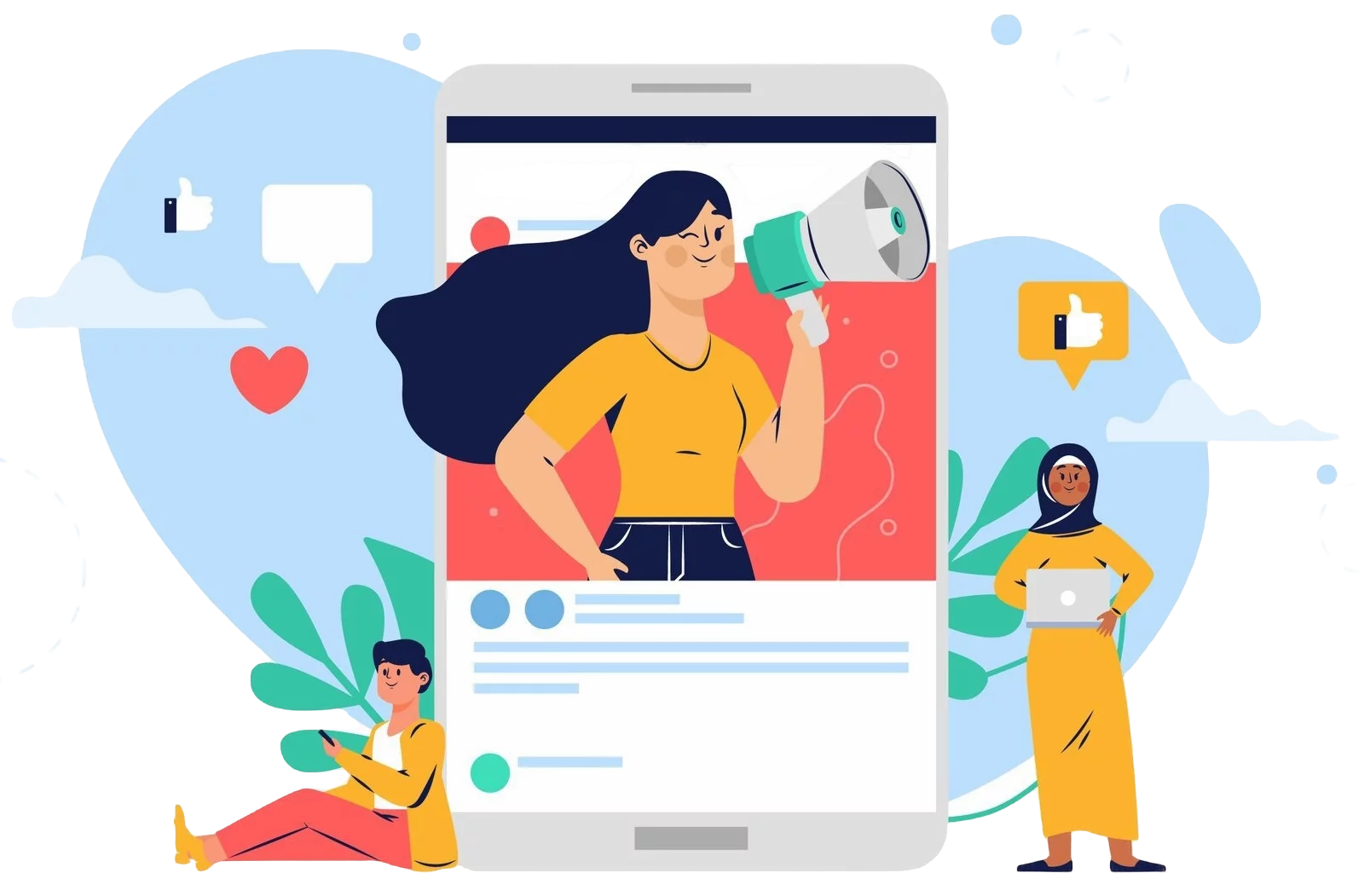The Rise of Influencer Marketing has transformed how businesses engage with their audiences; however, it does more than merely increase brand awareness. Although it plays a crucial role in fostering deeper connections, this marketing phenomenon is fundamentally driven by the psychology of influence. By comprehending the psychological triggers behind influencer marketing, we can better understand its meteoric growth and persistent popularity. Because of these dynamics, companies are increasingly relying on influencers to connect with consumers.
Understanding the Rise of Influencer Marketing
Influencer marketing has emerged as a fundamental component of digital strategies across the globe especially in India. Its popularity arises from a combination of trust, relatability and the inherent human need for social proof. Let’s delve into what propels the rise of influencer marketing it resonates with audiences because it taps into their desires and emotions. However, the dynamics of this marketing approach are complex; although it seems straightforward, many factors contribute to its effectiveness.
Psychology Behind Influencer Growth
- Social Proof as a Key Driver
Individuals inherently tend to adhere to suggestions from sources they deem trustworthy. Influencers serve as a form of social proof; they effectively persuade audiences to explore novel products or services. This psychological principle underlies the expansion of Influencer Marketing. However, it is essential to recognize that trust is subjective. Although many may follow influencers, not all recommendations hold equal weight, because personal experiences often shape perceptions. Thus, the dynamics of this marketing strategy are complex yet pivotal. - Relatability and Authenticity
In contrast to traditional celebrities, influencers frequently appear more relatable to their audiences. They share personal experiences, which makes them feel like trusted friends. This authenticity, however, drives elevated engagement levels and fosters community building. Although some may argue otherwise, the connection that influencers establish with their followers is significant because it nurtures loyalty and trust. - Fear of Missing Out (FOMO)
Limited-time offers or exclusive deals shared by influencers can trigger FOMO; this phenomenon prompts quicker decision-making. Brands leverage this opportunity to boost conversions effectively. However, the urgency created by such tactics can sometimes lead to hasty choices, because consumers may act without thoroughly evaluating their options. Although this strategy can be beneficial for brands, it is essential to consider the potential drawbacks for consumers.
Key Strategies Driving the Popularity of Influencer Marketing
- Campaign Strategies Tailored to Target Audiences
Effective influencer campaigns align closely with audience preferences. For instance, food brands often collaborate with influencers who specialize in recipe content; this ensures maximum impact. However, achieving this alignment can be challenging, because it requires a deep understanding of both the audience and the influencers. Although some brands may overlook this crucial aspect, the successful ones recognize its importance and act accordingly. - Community Building Through Social Media Engagement
Platforms such as Instagram and YouTube which are quite popular foster audience interaction; influencers spark conversations and, as a result, create strong communities around brands. However, this dynamic can be complex because different audiences engage in various ways. Although the interactions may seem superficial, they often lead to deeper connections among users. - Developing Promoters and Brand Advocates
Through sustained engagement with influencers over an extended period, brands cultivate devoted advocates who in turn promote their products organically. This long-term approach enhances credibility; however, it requires patience and effort. Although some may seek quick results, the benefits of building genuine relationships cannot be overstated. Because of this, brands should prioritize authentic connections, which ultimately lead to greater loyalty and trust.
Why the Psychology of Influence Works in India
- Cultural Relevance
Influencers in India engage profoundly with local audiences, as they embrace regional languages, traditions and trends. However, this connection is not merely superficial; it is rooted in a genuine understanding of cultural nuances. Although many influencers may focus on broader, more universal themes, they recognize the importance of tailoring their content to resonate with specific communities. This approach not only fosters engagement but also builds trust among followers, because authenticity is key in today’s digital landscape. - Trust-Based Society
Indian consumers heavily depend on word-of-mouth recommendations; this reliance renders influencer endorsements more effective than traditional advertisements. However, the impact of these endorsements can vary greatly. Although many people trust influencers, some may still prefer conventional ads because they often provide a sense of familiarity. This complex dynamic highlights the importance of understanding consumer behavior in the digital age. - Digital Transformation
The swift proliferation of smartphones and social media in India has indeed cultivated a fertile environment for influencer marketing to thrive. However, challenges persist; this rapid growth has also led to a saturation of content, making it increasingly difficult for brands to stand out. Although the potential for reaching vast audiences is significant, marketers must navigate this complex landscape carefully, because competition is fierce.
Measuring Influencer Success: Metrics That Matter
Tracking the performance of influencer campaigns is crucial to determine their ROI. Key metrics include:
- Engagement Rate: Indicates how well the content resonates with the audience.
- Conversion Rate: Measures how many viewers take action, such as purchasing a product.
- Audience Interaction: Tracks likes, comments, shares, and clicks to evaluate reach.
The Role of User-Generated Content (UGC) in Influencer Marketing
The creation of User-Generated Content (UGC) by influencers cultivates trust and authenticity; this is primarily because such content frequently exceeds the performance of branded materials. However, its appeal lies in its relatable nature, which resonates more with audiences. Although branded content attempts to connect, it often lacks the genuine touch that UGC provides. Examples include:
- Product reviews
- Tutorials and “how-to” videos
- Customer success stories
User-generated content (UGC) also facilitates long-term content strategies; it provides a consistent flow of relatable materials for brands. However, this approach is beneficial because it fosters deeper connections with audiences. Although some may argue that UGC lacks the polish of professionally produced content, its authenticity often resonates more profoundly. This is particularly true in an era where consumers seek genuine engagement.
2024 Trends in Influencer Marketing
- Focus on Nano and Micro-Influencers
These smaller-scale influencers have higher engagement rates and niche audience connections. - Increased Use of AI Tools
Platforms like Hobo.Video leverage AI to identify suitable influencers, track campaign success, and optimize performance. - Shoppable Content
Integrating direct purchase options within influencer posts is set to grow in popularity. - Collaborations with UGC Creators
Collaborating with creators who specialize in user-generated content but don’t post on social media allows brands to maintain an authentic presence.
Challenges in Influencer Marketing and How to Overcome Them
- Ensuring Authentic Brand Messaging
Collaborate with influencers those who resonate with your brand values to prevent miscommunication. This approach is crucial; however, ensure that the partnership is authentic. Although it may be tempting to engage anyone with a large following, this can lead to mismatched expectations. Therefore, choose carefully, because the right influencer can amplify your message effectively. - Managing Campaign Budgets
Begin with nano or micro influencers to optimize return on investment (ROI); however, this approach may require careful consideration. Although the impact of larger influencers is often more visible, smaller ones can yield significant results. Because they typically have more engaged audiences, they can foster authentic connections. But, it’s crucial to evaluate each influencer’s alignment with your brand objectives, as this will ultimately determine the effectiveness of your campaign. - Tracking Performance
Use data-driven tools like Hobo.Video for real-time insights into campaign effectiveness.
The Future of Influencer Marketing in India
The Rise of Influencer Marketing shows no signs of slowing down. Future trends include:
- Deeper integration of influencers into long-term brand strategies.
- Expansion into Tier 2 and Tier 3 cities, tapping into untapped markets.
- Enhanced transparency in influencer collaborations, fostering trust.
Conclusion
The Rise of Influencer Marketing is deeply rooted in psychology. By leveraging trust, authenticity, and social proof, influencers have reshaped modern advertising. As brands continue to embrace these strategies, the popularity of influencer marketing will only grow stronger.

Amplify Your Brand,
One Influence at a Time.
About Hobo.Video
When it comes to navigating the Rise of Influencer Marketing, Hobo.Video is your ultimate partner. As an AI-enabled platform, we connect brands with a vast network of influencers, from nano creators to celebrities.
Why Choose Hobo.Video?
- Tailored campaigns for maximum impact.
- Data-driven strategies to measure success.
- Expertise in UGC creation and influencer outreach.
Whether you’re looking to build brand ambassadors, foster community engagement, or maximize ROI, Hobo.Video ensures your influencer marketing journey is seamless and successful.
If you are a brand looking for unconventional hypergrowth. Connect with us Here

